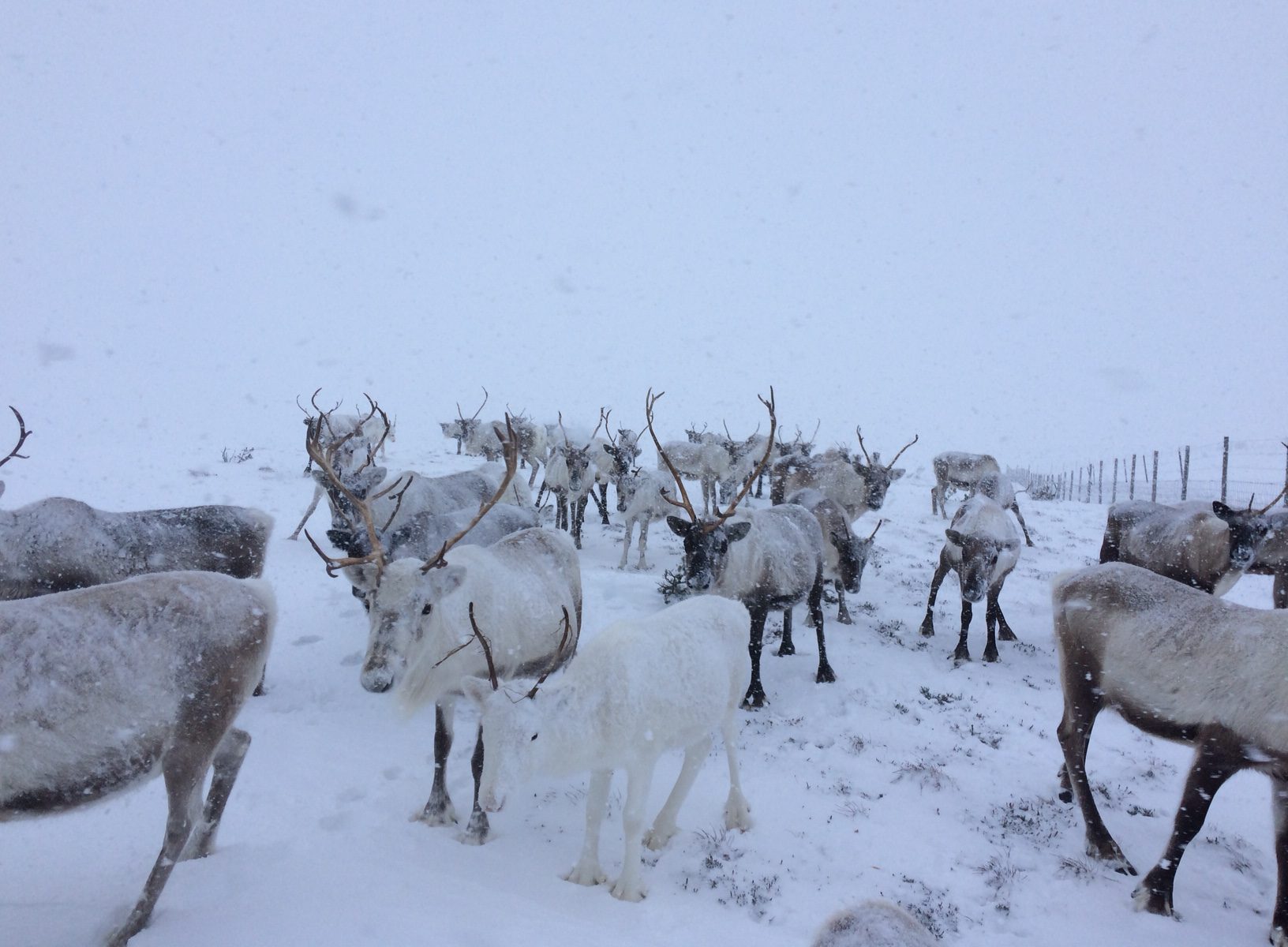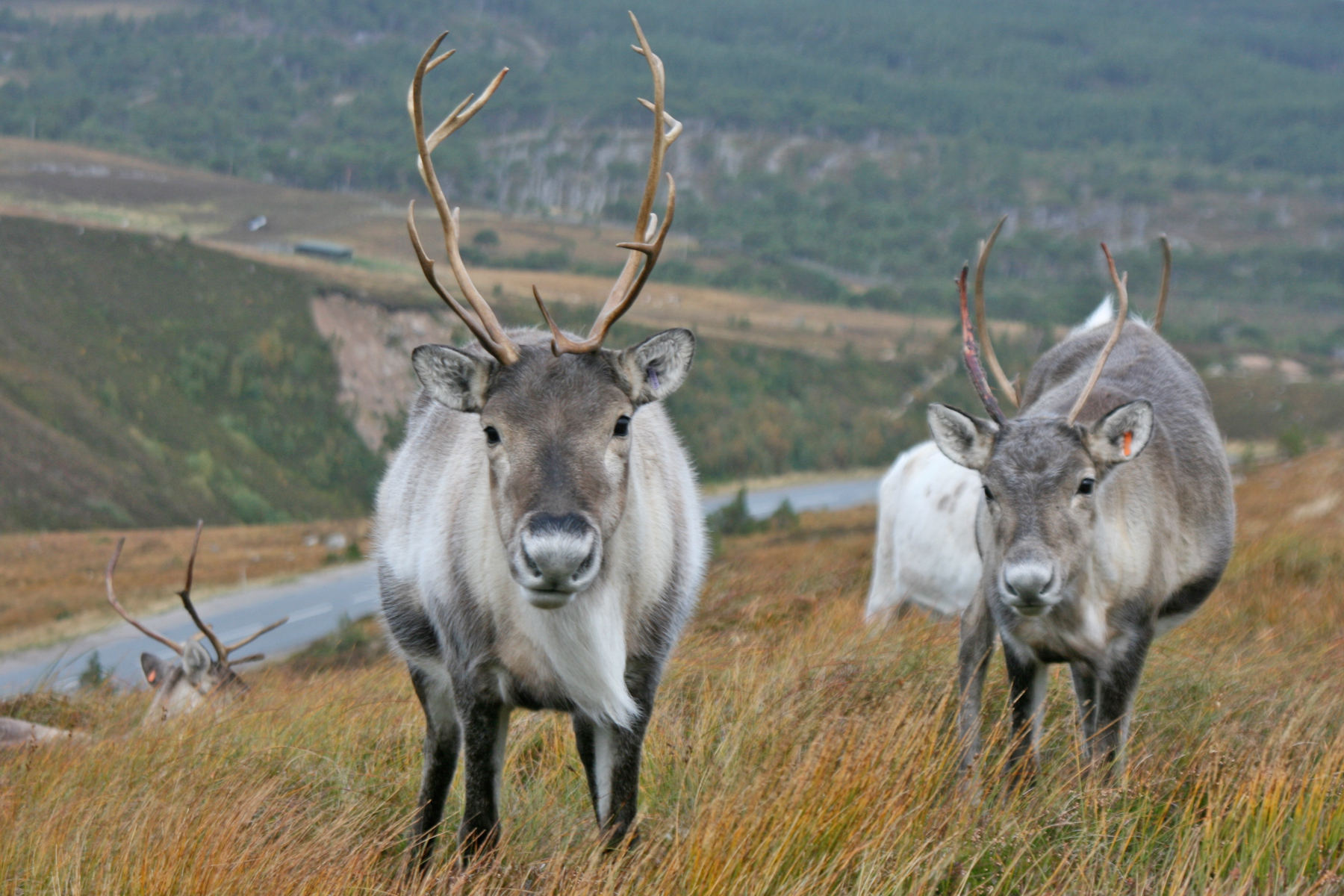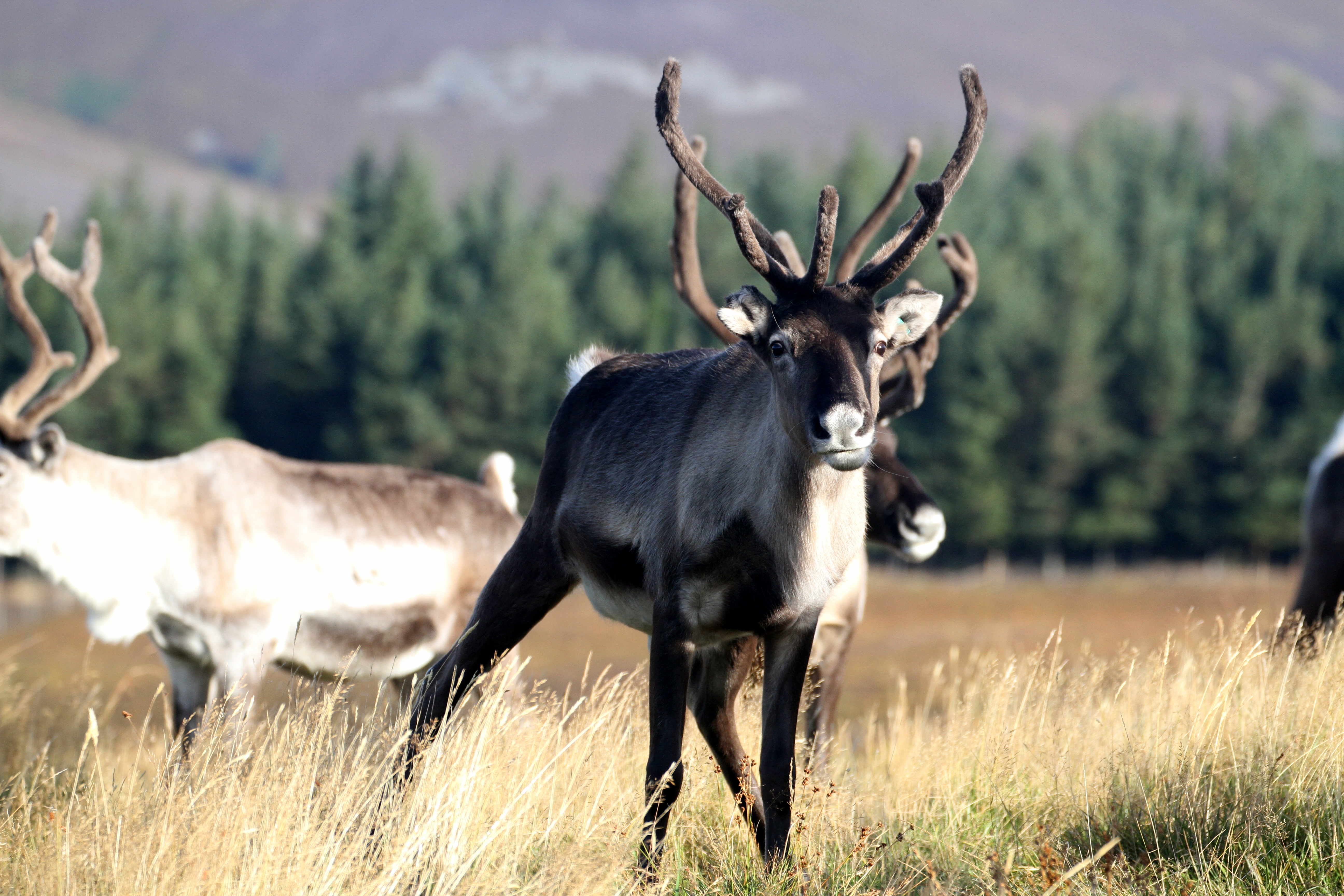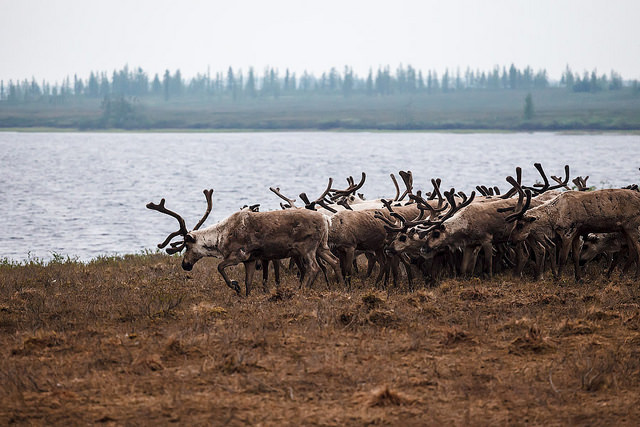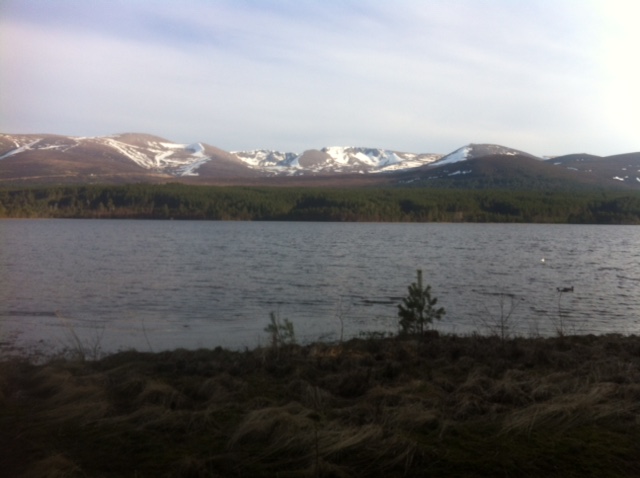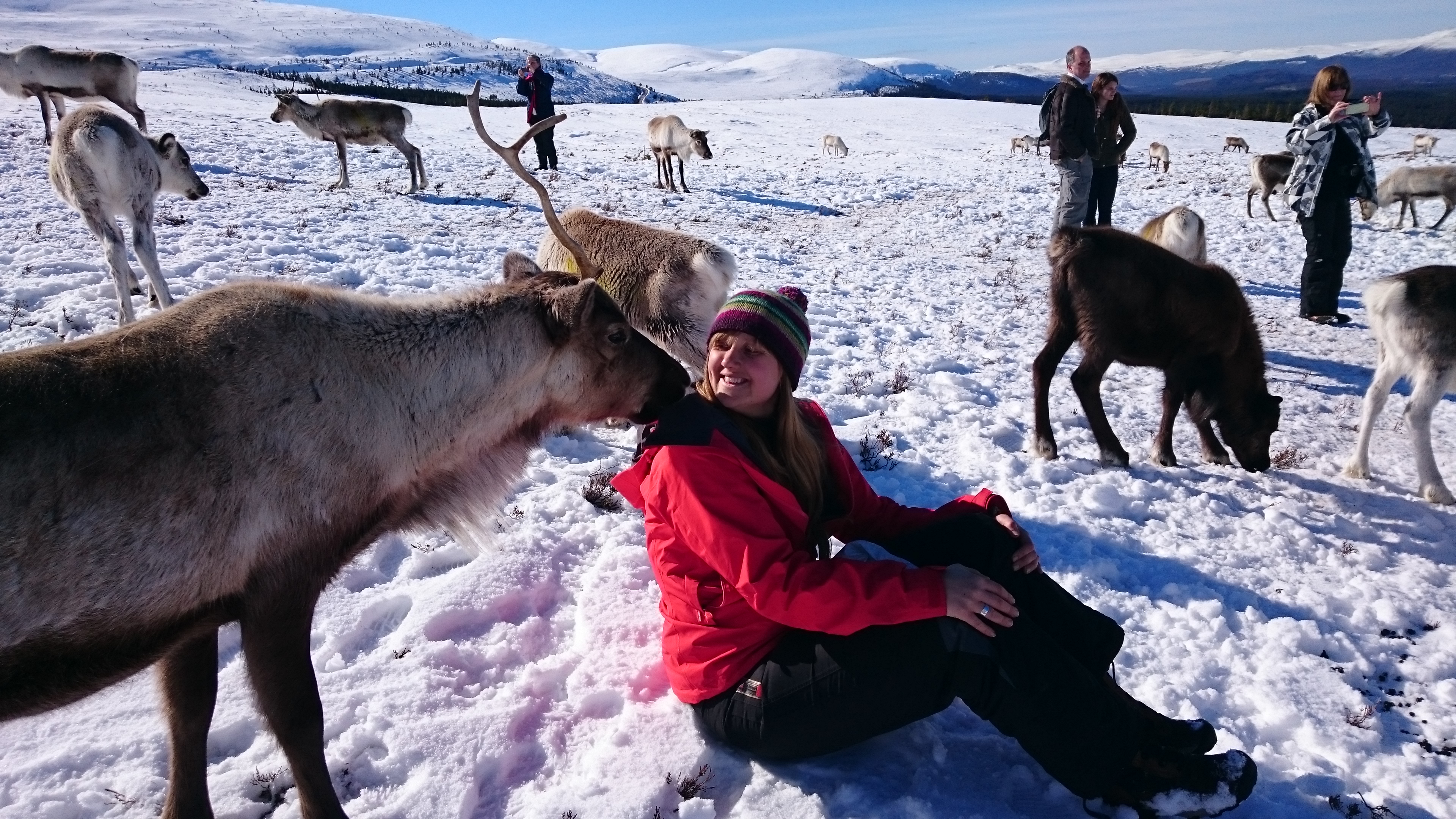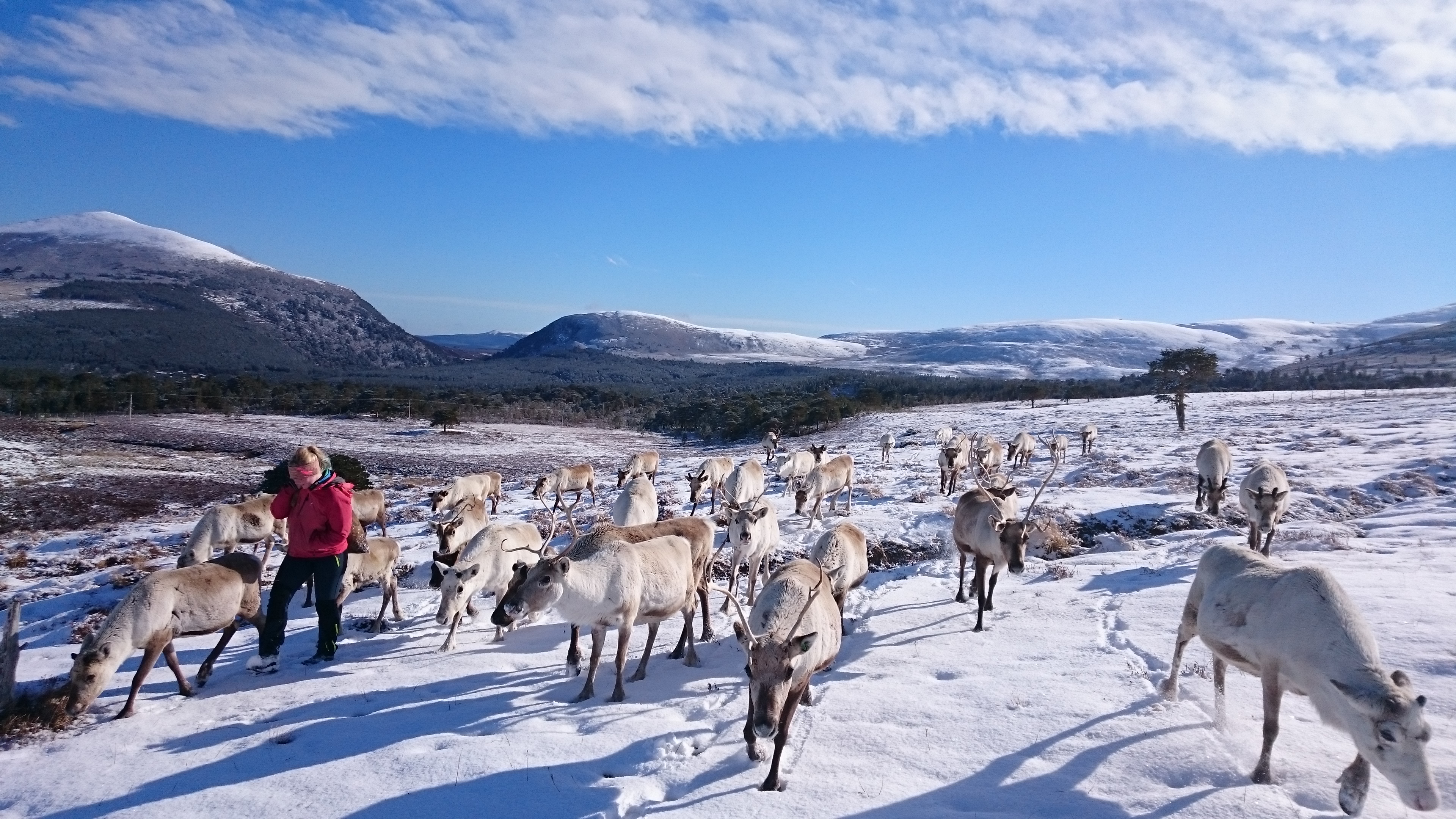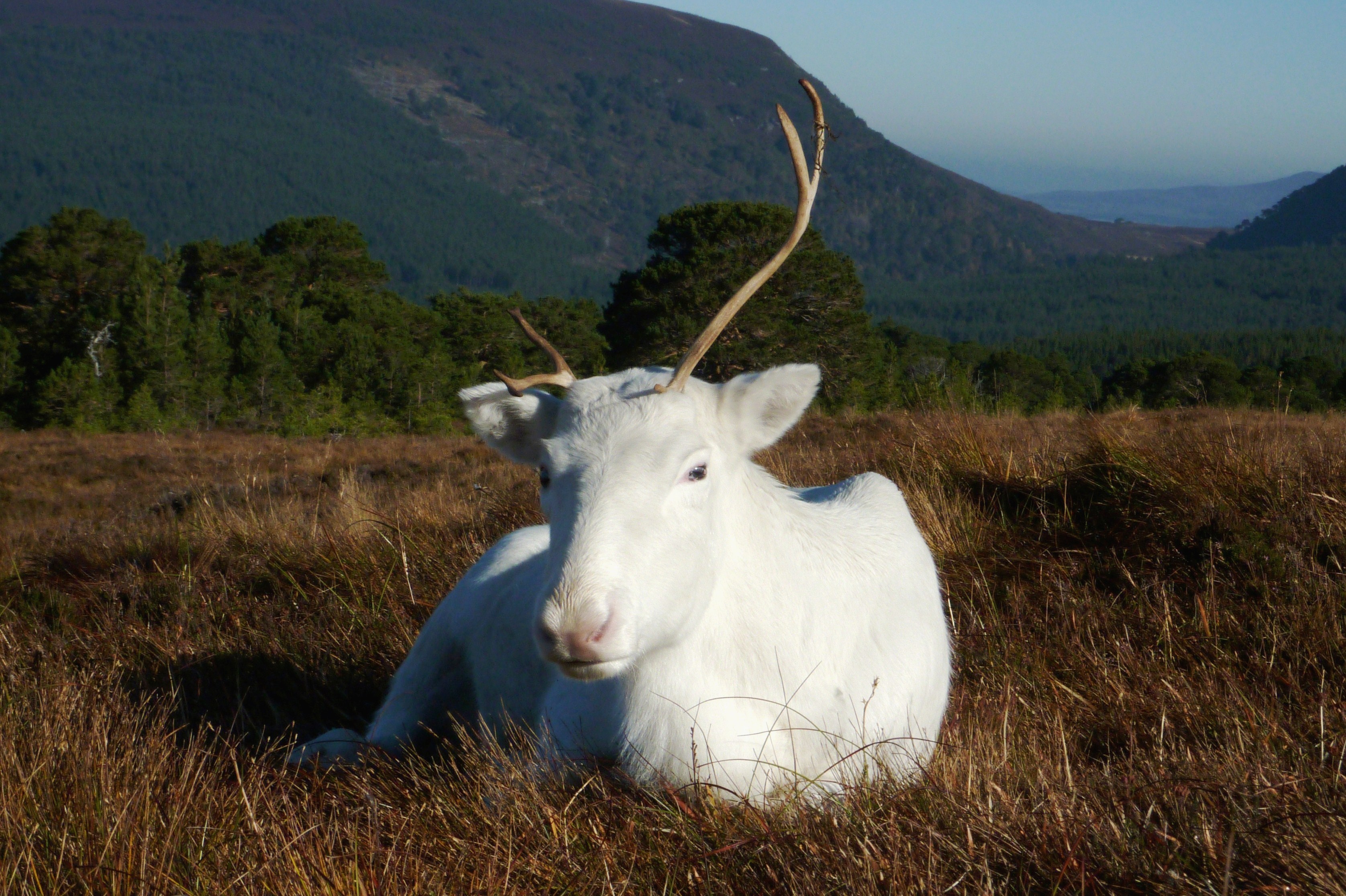
In January, we are closed to the public, and it’s the time of the year when we all take the opportunity to take holidays and have a bit of a break. There’s still plenty to get on with though at the Centre – the reindeer are all free-ranging but we still feed them daily, if of course we can find them! At this time of the year their appetite is greatly reduced and the weather doesn’t always permit us to walk out onto the mountainside. If we can’t feed them, it doesn’t matter as they’re perfectly capable of finding enough food themselves, but its always nice to check them over and see that they’re all fine. On snowy days, this can take two or three of us two or three hours, as we’re often breaking a track through deep snow, whilst carrying feed, to get to where the reindeer are.

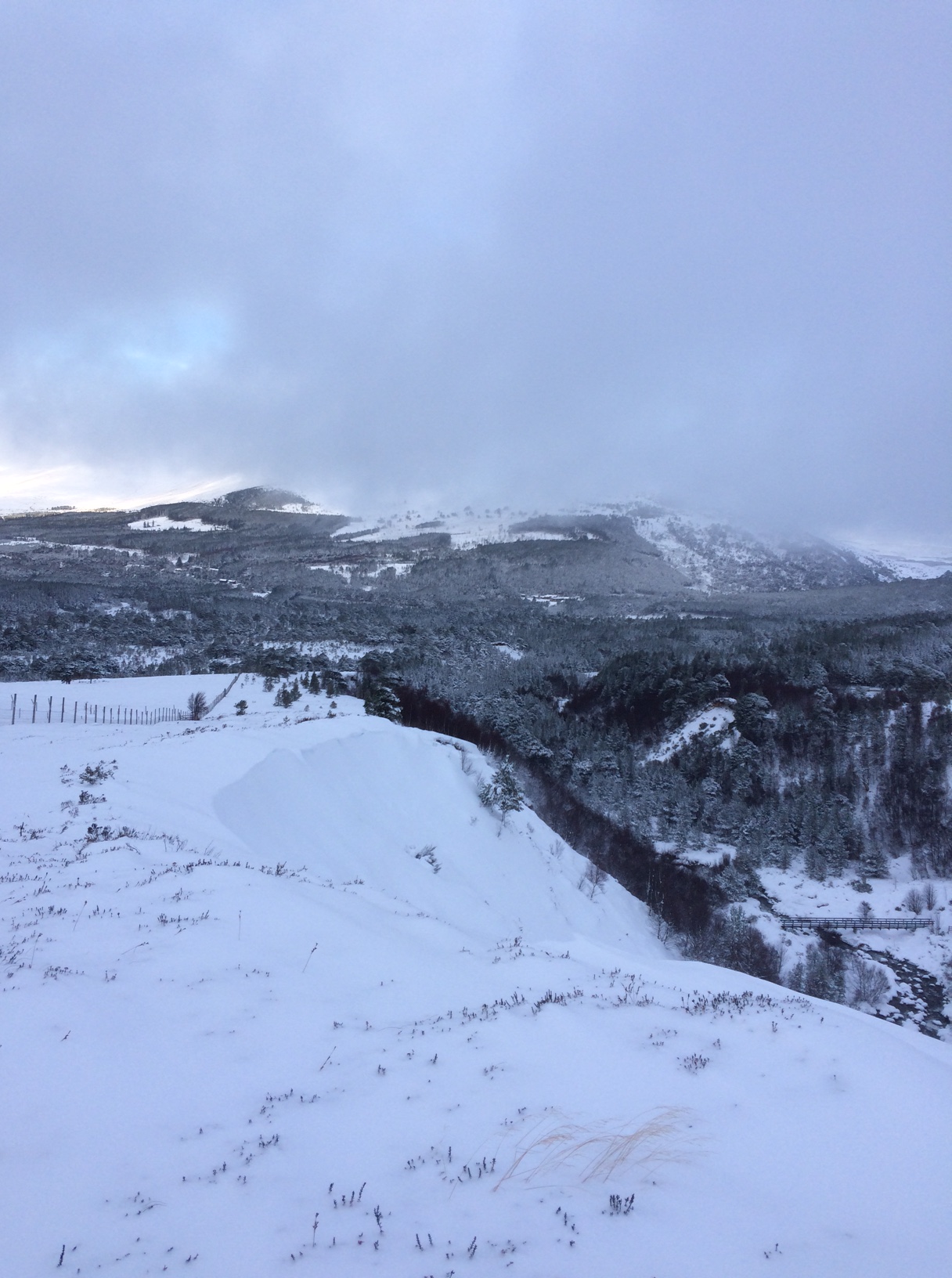


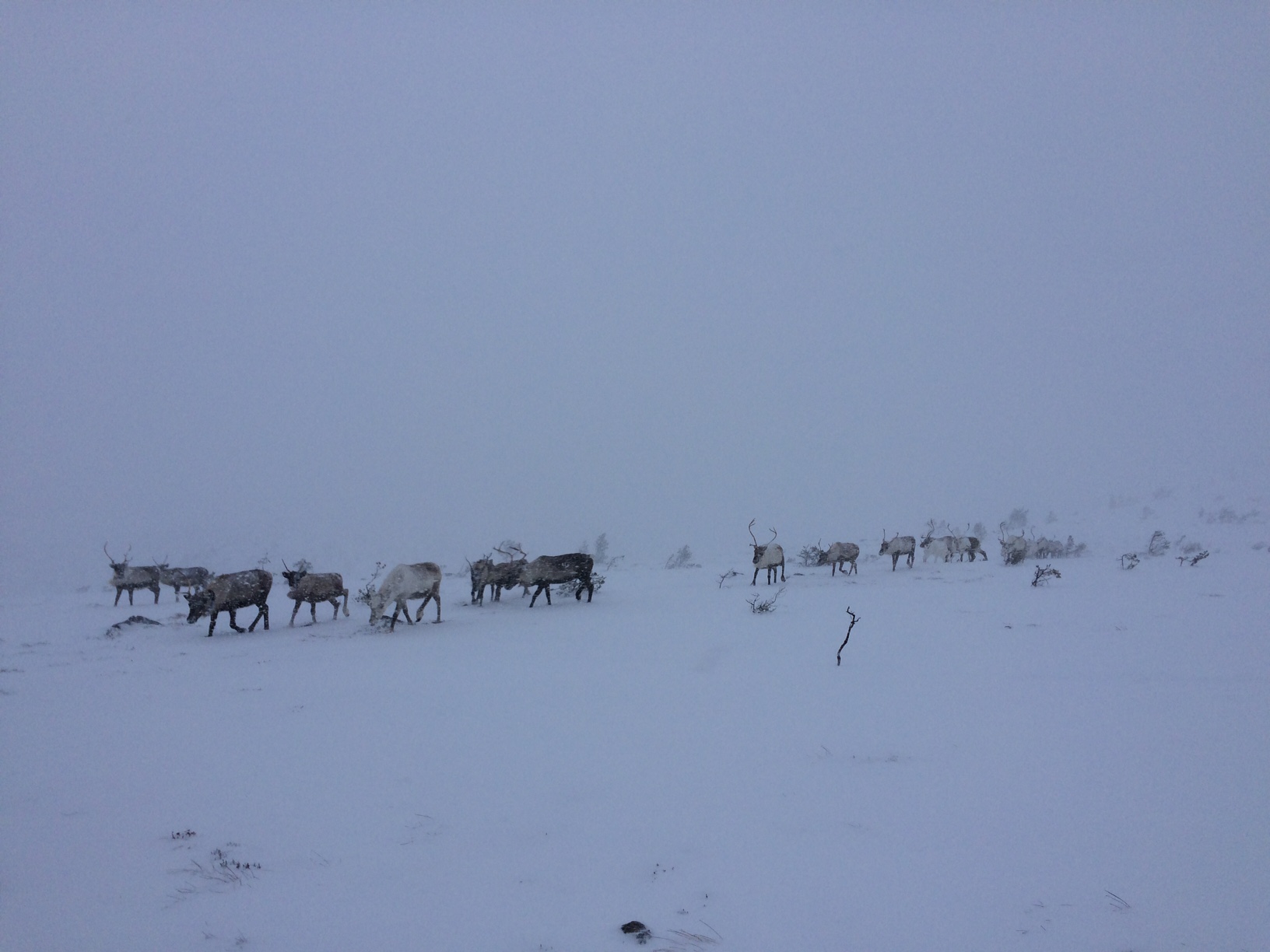
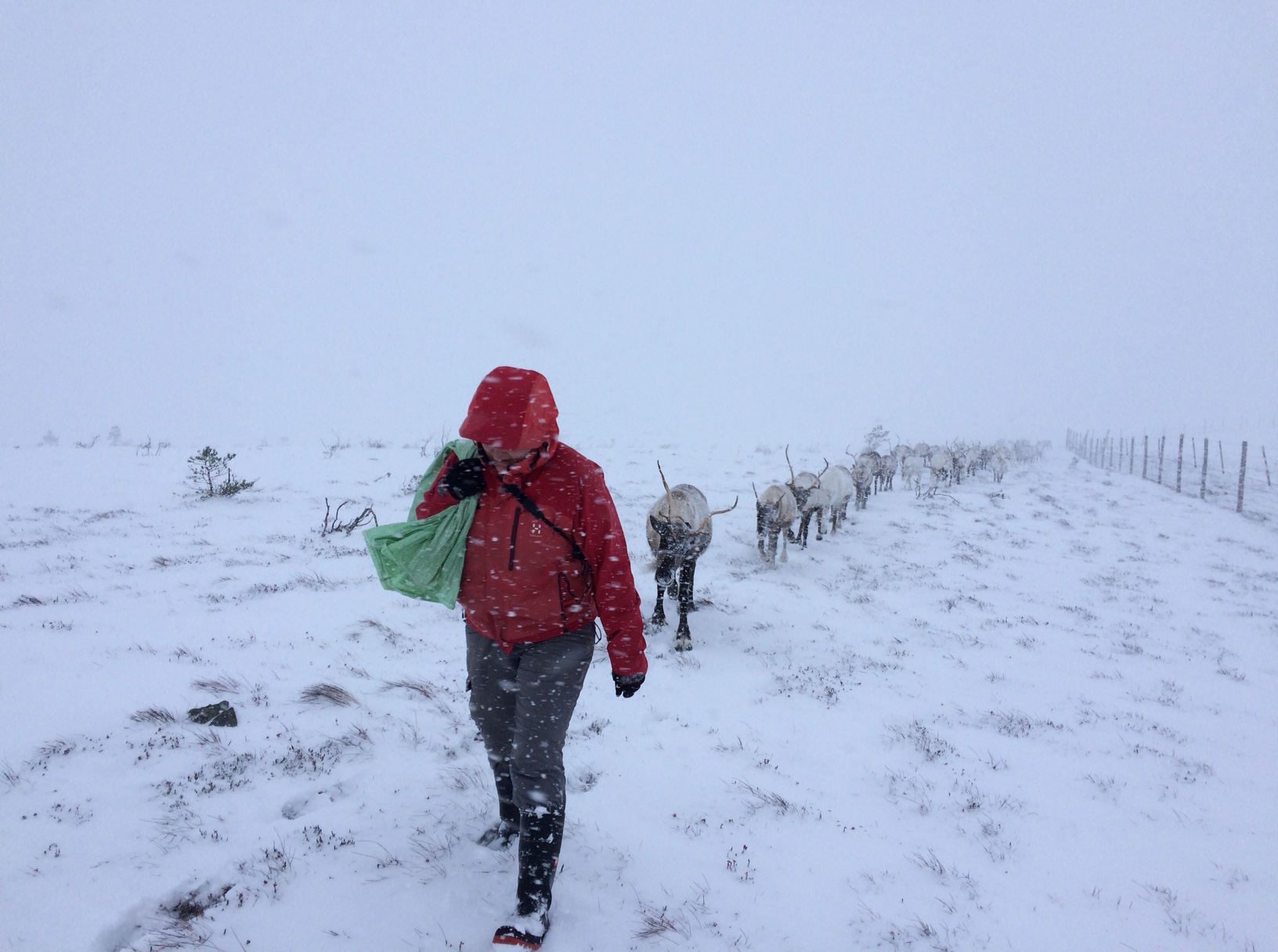


Aside from feeding the reindeer, there is plenty of maintenance to do at the Centre, which we can’t really do whilst we’re open. Painting the exhibition shed floor is a big job each January – it gets very worn over the course of the year so needs three coats of garage floor paint to smarten it up in preparation for all of our visitors over the coming year! It’s always entertaining reading the instructions on the paint can “Ensure the temperature is over 10*C”, then looking out of the window at the snow – anyone who’s visited will know that our exhibition shed is unheated, so it’s unfortunate that we have to do the floor in the coldest month of the year, when the temperature is mostly sub-zero. Our solution is to block off the doors and get a fan heater on, which helps, but I still wear a hat and gloves and take a cup of tea to help keep me warm!
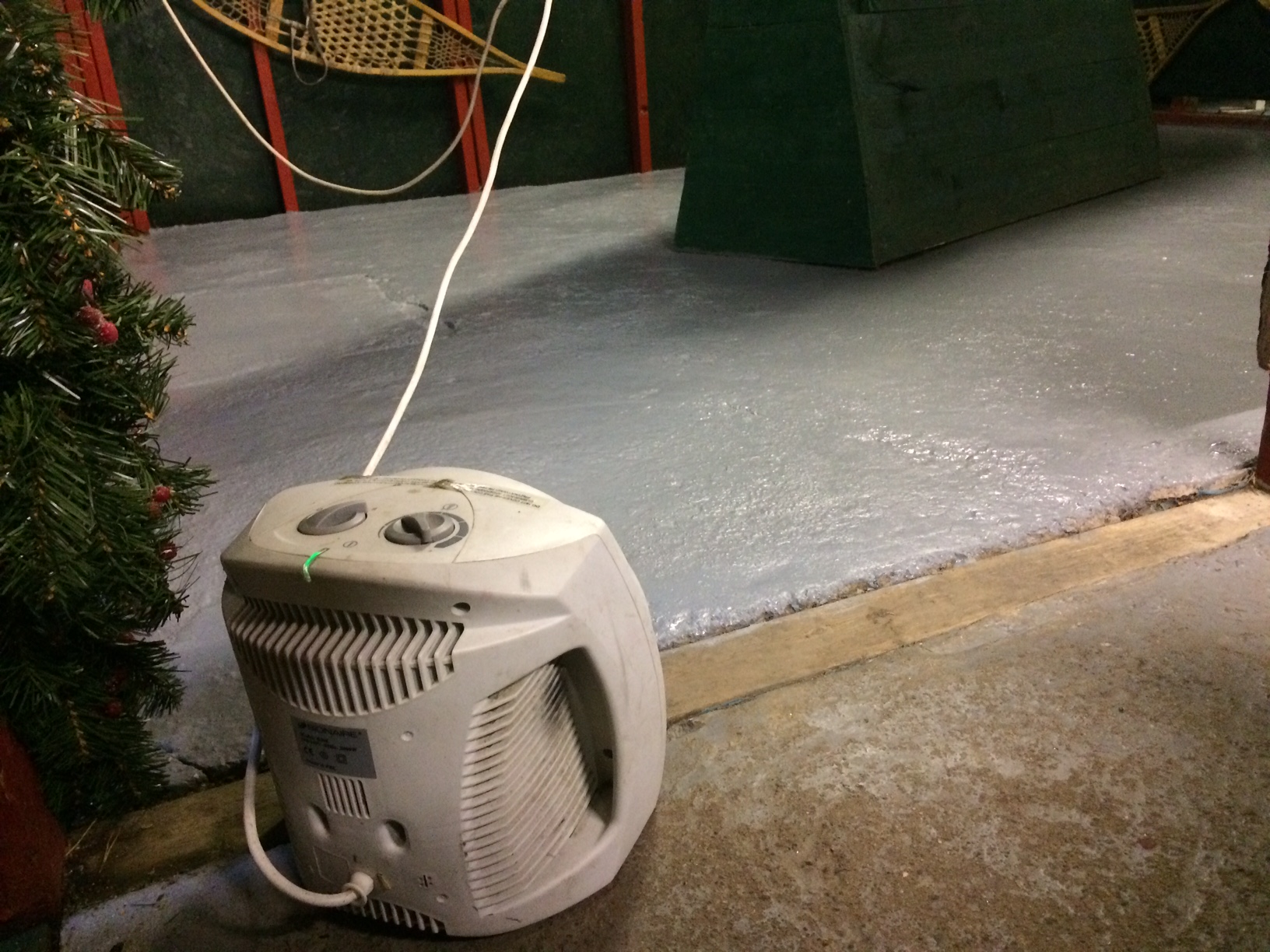
The other big job for me is to oil all of our Christmas harness and make any necessary repairs before it is popped into storage for the year. If you’ve met me, you may realise that I absolutely love order and lists, so organising harness is one of my favourite jobs. It’s also a little warmer sitting oiling harness in the shop than most of the other tasks. The shop is the only place large enough to do this really, which is another reason that its done whilst we’re closed, along with the fact that we’d never get round to it if we left it until before Christmas!

There’s still also plenty of office work to get on with: making up adoption packs, answering emails, planning what gifts we’ll order to go in next year’s adoption packs, counting and reordering shop stock (again a delight for me as I get to make lists!). So whilst we may be a little quieter, don’t imagine we’re just sat around with our feet up!
Perhaps the most important purpose of being closed to the public in January is that after a hectic Christmas season (in fact all of 2016 was hectic…) it gives both us herders and the reindeer a proper break and change in routine, which means that when we reopen in February we’ll be bright and bushy tailed, and actually look forward to meeting our visitors and introducing everyone to the beautiful reindeer!
Andi

